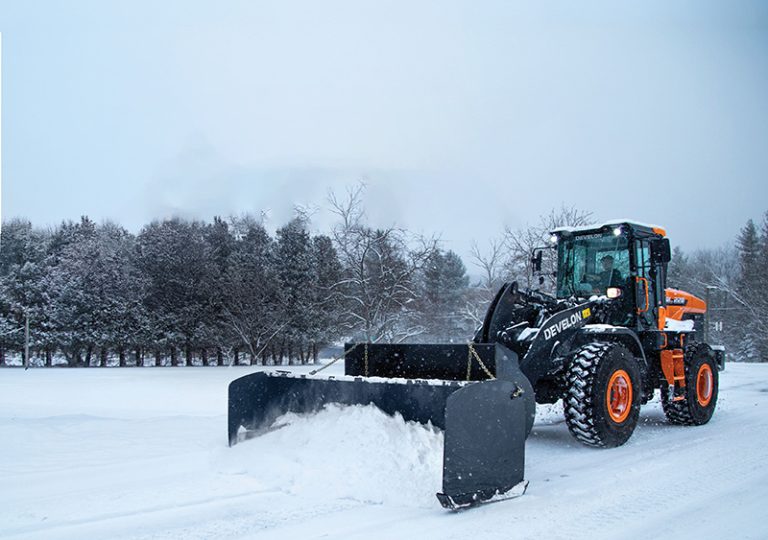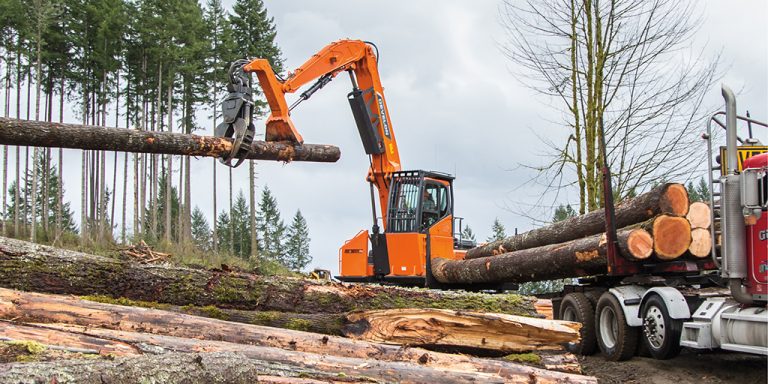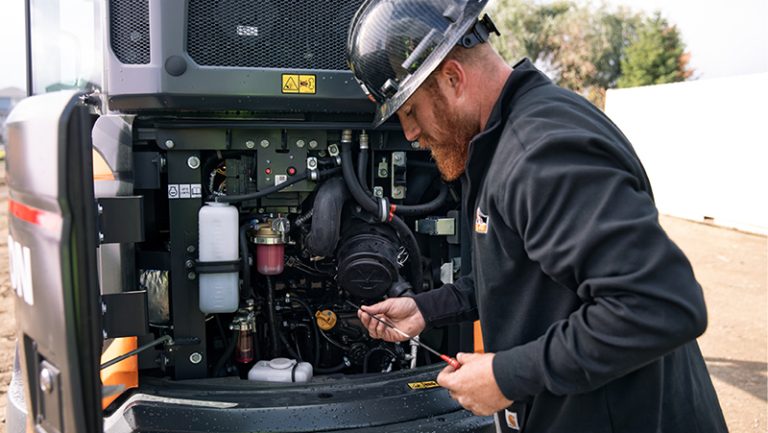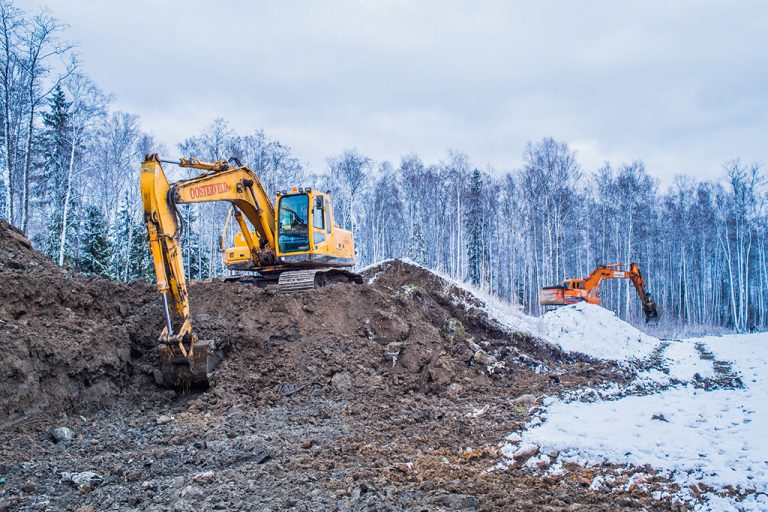Machine Stable specializes in complete excavators, loaders and their attachments.

Mini Excavator Boom Cylinder Leak Investigation
Table of Contents
- Introduction
- Root Causes of Boom Cylinder Oil Leakage
- Mathematical Calculation and Verification
- Importance of Seal Compression Ratio
- Relief Valve Inspection
- Arm Cylinder Seal Damage
- Counterbalance Valve Check
- Spool Wear and Distributor Valve Issues
- Boom Cylinder Rodless Cavity Joint Oil Leakage Repair
- Common Hydraulic Cylinder Failures in Construction Machinery
- Mini Excavator Hydraulic System After-Sales Case Study (U.S.)
- FAQ
- Conclusion
Introduction
The hydraulic system is the core of modern excavators, determining the efficiency and stability of equipment under high-intensity operations. However, mini excavator boom cylinder oil leakage failures have long troubled users, causing downtime and increasing maintenance costs. Even minor leaks at the boom cylinder joint can gradually affect overall machine performance and lead to significant economic losses.
“Oil leakage may seem minor, but if not addressed promptly, it can lead to hydraulic system failure and compromise operational safety.”
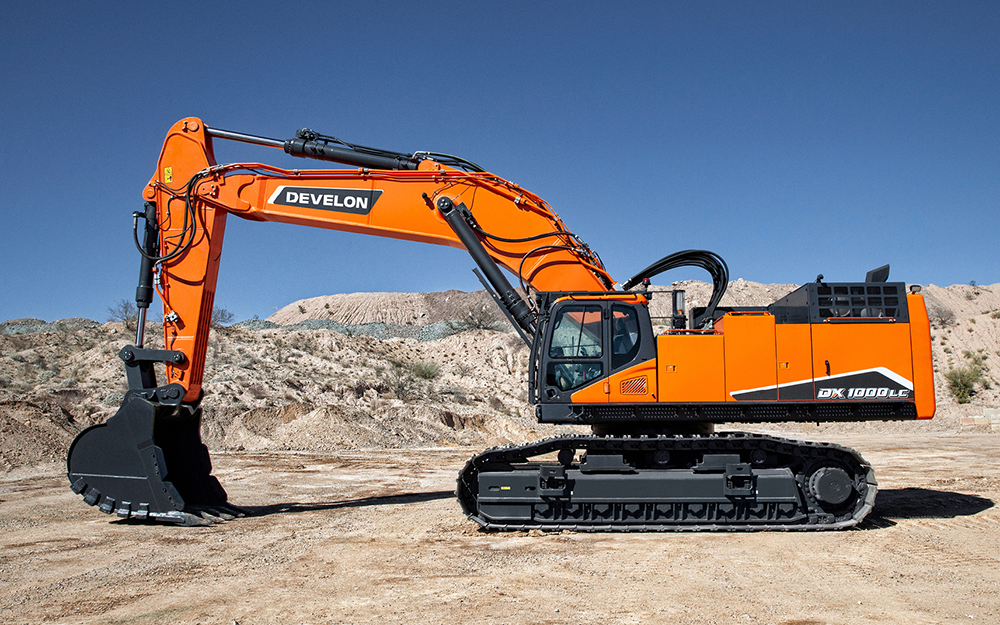
Root Causes of Boom Cylinder Oil Leakage
Boom cylinder oil leakage can be caused by multiple factors. Causes of hydraulic cylinder seal failure in excavators include insufficient seal compression, material aging, improper assembly, and hydraulic oil contamination:
- Insufficient seal compression: If the seal ring compression is below the design standard, oil leakage will occur.
- Seal material aging: Rubber seals in high-temperature environments or older machines may develop cracks or harden.
- Assembly issues: Improper installation or misaligned seals can accelerate wear.
- Hydraulic oil contamination: Dirt or moisture in the oil damages the seal surface, causing leakage.
Many operators underestimate that minor leaks can develop into systemic failures, which is why leakage issues are often persistent.
Mathematical Calculation and Verification
During the inspection of boom cylinder leaks, engineers applied the Hydraulic seal compression ratio calculation method, repeatedly calculating the seal’s compression ratio under pressure:
- Standard range: 10%-30%
- Current value: 8% (clearly insufficient)
“Calculations revealed that the insufficient seal compression ratio was the key reason for the oil leakage.”
Importance of Seal Compression Ratio
Seal compression directly affects the hydraulic system’s sealing performance and stability. Too low compression leads to leaks, while too high compression accelerates wear or may damage internal cylinder components. Ensuring a compression ratio within the 10%-30% range is crucial for long-term reliable operation.
Correct compression ensures effective sealing and extends hydraulic system life while reducing failure rates.
Relief Valve Inspection
During leak troubleshooting, the boom cylinder relief valve (safety valve) is a critical check point. Inspect for wear or sticking, and if unclear, replace with a functional valve for testing.
Each cylinder has two functions, so both relief valves must be replaced simultaneously to prevent uneven operation or persistent leaks.
Check the valve core, spring, and body for dirt or wear. Clean or replace as necessary to ensure smooth and safe boom operation.
Arm Cylinder Seal Damage
Over time, high operating temperatures or long service life can cause oil seals to age or crack. Severe cracks not only cause leaks but can also affect the boom and stick movements, triggering additional hydraulic issues.
“Seal damage should not be ignored; it is the first line of defense for hydraulic system safety.”
Regular inspections and timely replacement of aging seals are essential to prolong system life and ensure operational safety.
Counterbalance Valve Check
Counterbalance valves are typically used on the boom and stick. When arm drop occurs, check the valve core and spring for wear or obstruction by foreign objects.
- Clean and, if necessary, replace the counterbalance valve to maintain stable operation.
- Regular checks prevent cylinder drops and other potential hazards.
Proper counterbalance valve function ensures safe and stable boom operation.
Spool Wear and Distributor Valve Issues
The distributor valve (main control valve) is closely related to boom cylinder movement. Blocked valve ports, worn spools, or excessive clearances can affect system response speed and precision.
Worn spools or damaged ports complicate troubleshooting and may require full valve replacement, increasing downtime and maintenance costs.
Boom Cylinder Rodless Cavity Joint Oil Leakage Repair
When repairing boom cylinder rodless cavity joint oil leakage, inspect the joint for microcracks, replace with durable seals, and perform strict pressure testing.
Temporary fixes may stop leaks short-term, but only proper seal design and assembly improvements ensure long-term reliability.
Common Hydraulic Cylinder Failures in Construction Machinery
In the construction machinery industry, common hydraulic cylinder failures include:
- Seal hardening due to high temperature
- Piston rod scratches
- Oil contamination causing wear
- Pressure imbalance causing cavitation
Regular inspections, cleaning of oil circuits, and replacement of worn components significantly reduce failure rates.
Mini Excavator Hydraulic System After-Sales Case Study (U.S.)
In the U.S., a municipal contractor operating SY55–SY75 mini excavators frequently experienced boom cylinder oil leakage, particularly at the rodless cavity joint. Operators reported oil dripping during heavy-duty operations, causing slow arm movement or even drops, severely affecting efficiency and safety.
Fault Diagnosis
- Relief valve inspection: Original valves were worn and sticking, causing unstable pressure.
- Seal check: Old seals showed microcracks. Using Hydraulic seal compression ratio calculation method, the compression ratio was only 8%, below the 10%-30% standard.
- Distributor valve and spool check: Slight wear and minor blockage affected cylinder precision.
Solutions
- Seal upgrade: Replace with high-durability seals to achieve standard compression ratio.
- Valve replacement: Replace relief and counterbalance valves to stabilize pressure.
- High-pressure testing: Simulate heavy-load operations to ensure smooth boom movement.
- On-site monitoring: Observe 100 machines for six months to track leakage, consistency, and pressure stability.
Results
- All machines remained leak-free during monitoring.
- Boom movement became smooth, safety hazards eliminated.
- Downtime and maintenance costs were significantly reduced.
“This after-sales case demonstrates that scientifically selecting seals, ensuring proper compression, and optimizing valves can completely solve mini excavator hydraulic issues.”
FAQ
Q: What are the most common causes of boom cylinder oil leakage?
A: Insufficient seal compression, aging seals, spool wear, or relief valve faults.
Q: How often should hydraulic seals be checked?
A: Every 2000–3000 operating hours.
Q: Can rodless cavity joint leakage be completely resolved?
A: Yes, through seal replacement, valve inspection, and oil circuit cleaning.
Q: Are domestic seals as reliable as OEM seals?
A: As long as they meet excavator boom cylinder seal selection standards and international specifications, they provide equivalent reliability.
Conclusion
Mini excavator boom cylinder oil leakage can be completely resolved. By analyzing seal failure causes, applying the Hydraulic seal compression ratio calculation method, and inspecting/replacing relief valves, counterbalance valves, worn seals, and spools, equipment life can be significantly extended.
The U.S. after-sales case shows that high-quality seals, proper compression, and strict assembly processes can completely eliminate mini excavator boom cylinder oil leakage, improving operational safety and efficiency.

